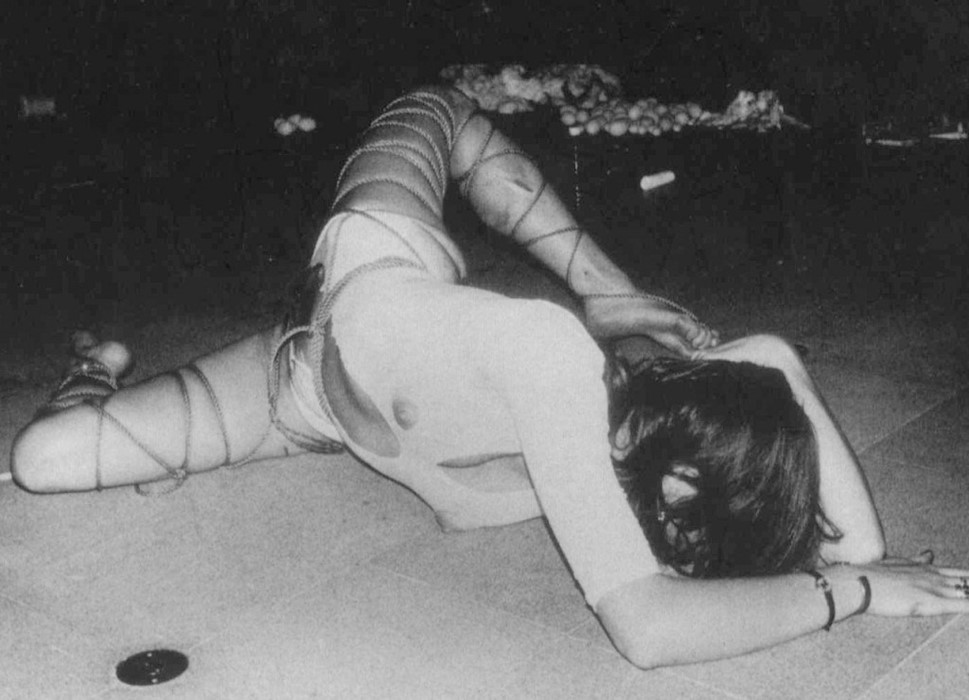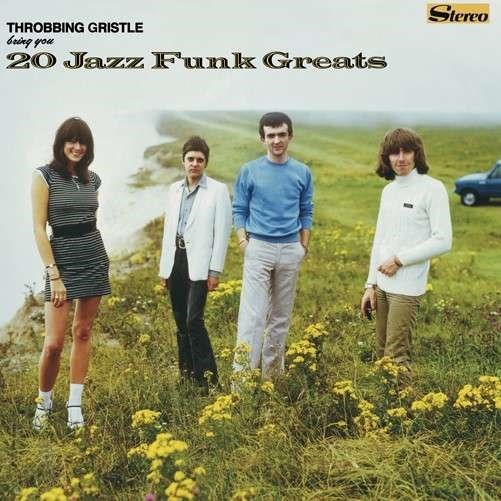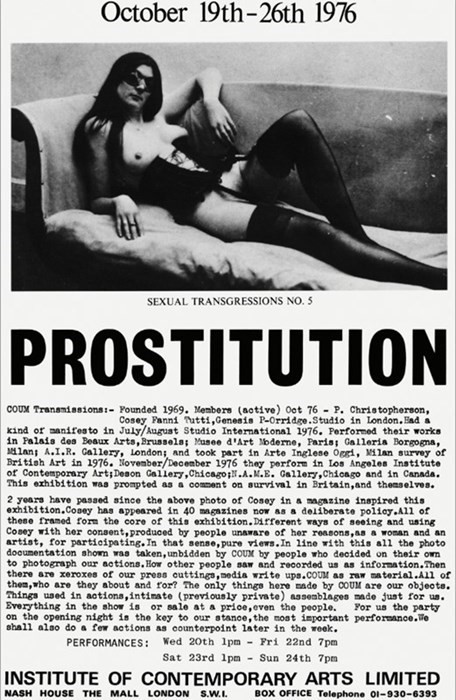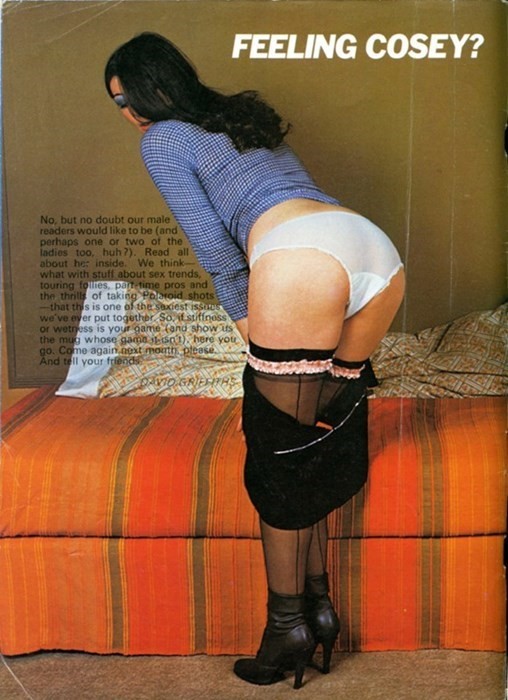We explore the multi-faceted identity of artist and musician Cosey Fanni Tutti
Playing a pivotal role in avant-garde groups Throbbing Gristle and Chris & Cosey, performance artist and musician Cosey Fanni Tutti (born Christine Newby) has spent the past five decades creating work that taps into the very essence of the human condition, from its most beautiful to its most violent and disturbing. She creates soundscapes that resonate on a base level, with some pieces provoking a visceral emotional response. Throbbing Gristle’s Hamburger Lady, for example, comprises Genesis P-Orridge telling the graphic, disturbing and sad true-life tale of a woman so badly burned she resembled a hamburger, while Cosey Fanni Tutti provides the suitably harsh, jarring and coarsely emotive musical accompaniment. Speaking at an event in 2010, Cosey Fanni Tutti described her interest as lying in the “sounds triggering [those] emotions, rather than lyrics, chords of choruses”.

Challenging established rules
Exploring themes on religion and the occult, one of the most shocking adoptions of symbolism in Throbbing Gristle’s visual arsenal was the Throbbing Gristle flash logo; a striking circular, red, black and white lightning-symbol sew-on patch that aped the Nazi swastika motif. Provocative, emotive and offensive, this “didn't come from being uninformed, nor was it frivolous,” Cosey told The Quietus in 2013. Cosey explained: “When TG started and we designed the TG flash, we were living in Hackney, very close by the seat of the UK fascists, the Brownshirts. We had local people who had been members. We had the train lines with the electrical hazard 'flash' warning. We were working with difficult sounds, ion generators, purpose built unpredictable electrical equipment, controversial subject matter, investigating and distributing information on control systems, etc. We were somewhat anarchic - and the colours of anarchy are combinations of red, black and white. All these factors contributed to the TG flash design and colour scheme. It stood for individual power, challenging established rules and expectations.”

Inhabiting personas
Separate from her musical endeavours, Cosey Fanni Tutti worked as a nude model and a stripper in 1970s and 80s London. Leaving her Cosey persona behind in Hackney at the Beck Road squat and Martello Street studio, in Soho Cosey became Scarlett the stripper. Despite compartmentalising this aspect of her life as removed from her musical, collage artwork, and even her nude art performances, it undoubtedly informed her artistic explorations of sex, particularly her men’s mag inspired porn and collage pieces. Last year, Cosey told Dazed about how stripping provided her with “first hand experience of what it was like to produce sexual product; both live as a stripper and in magazines… I was Scarlett when I was stripping, I wasn’t ‘Cosey Fanni Tutti’”. In this sense, it wasn’t so much the performance outfits, fetish gear or lingerie that would allow Cosey to build herself a new persona, but the removing of clothing totally that enabled her to inhabit and experience that world with an authenticity a pretender playing dress-up simply never could. Despite being nude, Cosey clothed herself an emotional armour to shield her inner sense of self: “You build up a mask that you have on when you’re doing those kind of things – not just physically, but also emotionally,” she said.

Self Reflection
In 1983 Cassette Time to Tell (later rereleased)– a work that Cosey Fanni Tutti used to explore the way the various facets of her life as a model, performance artist and stripper fitted together – the artist layers dreamy vocals, spoken in her soft Yorkshire accent with a slow and steady rhythmic delivery over ambient, industrial electronica. Although she has said of her work that the lyrics or even the chords or choruses are not important to her –“certain sounds just hit you in the gut and those are the emotions I’m interested in when I’m making music,” she told the Red Bull Music Academy in 2010 – the words she speaks on Time to Tell are an exercise in self reflection, and include thoughts on how her clothes and actions helped shape her myriad personas. “Working as a topless dancer and striptease artist – this is eroticism presented live and spontaneously,” she says. “It is not choreographed. There is communication taking place in a visual sense; facial expressions, physical gestures and the mood of the music. Projection of one’s personality is the key to success, unlike that of a nude model. Costumes and movement and the music create the atmosphere for the ten minutes one is in focus.” She adds: “However, you are still who the viewer wants to perceive you as.”

